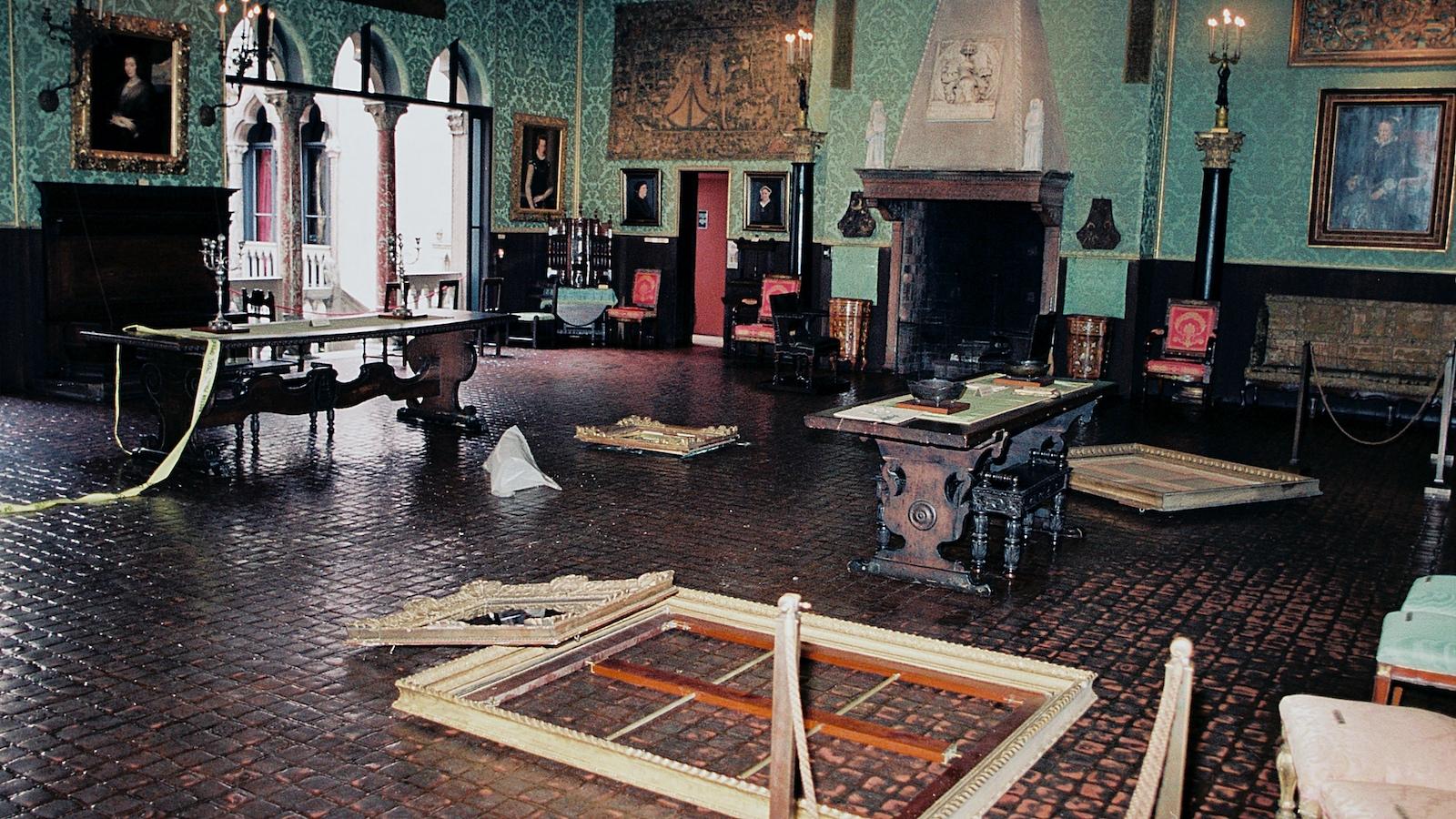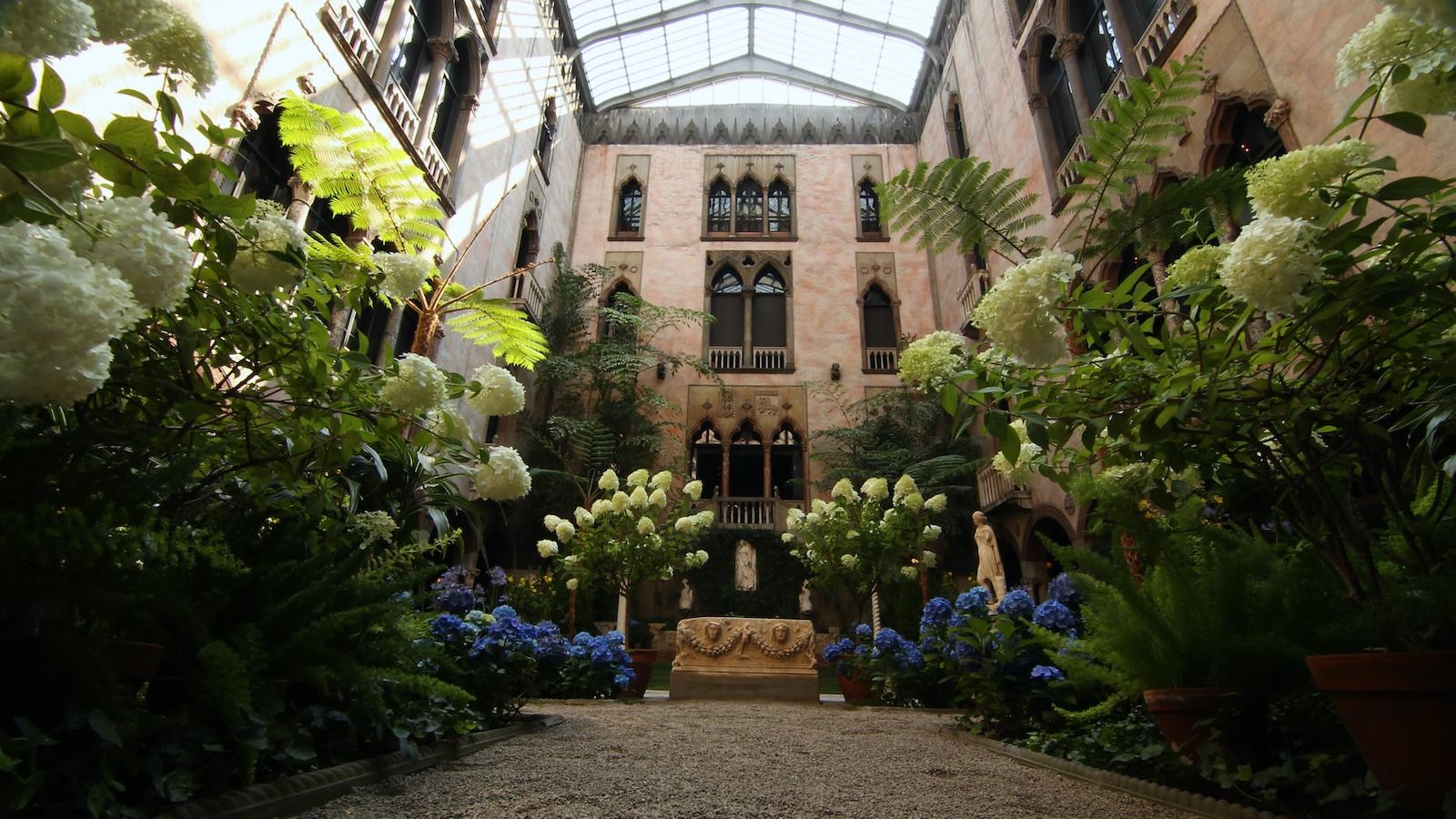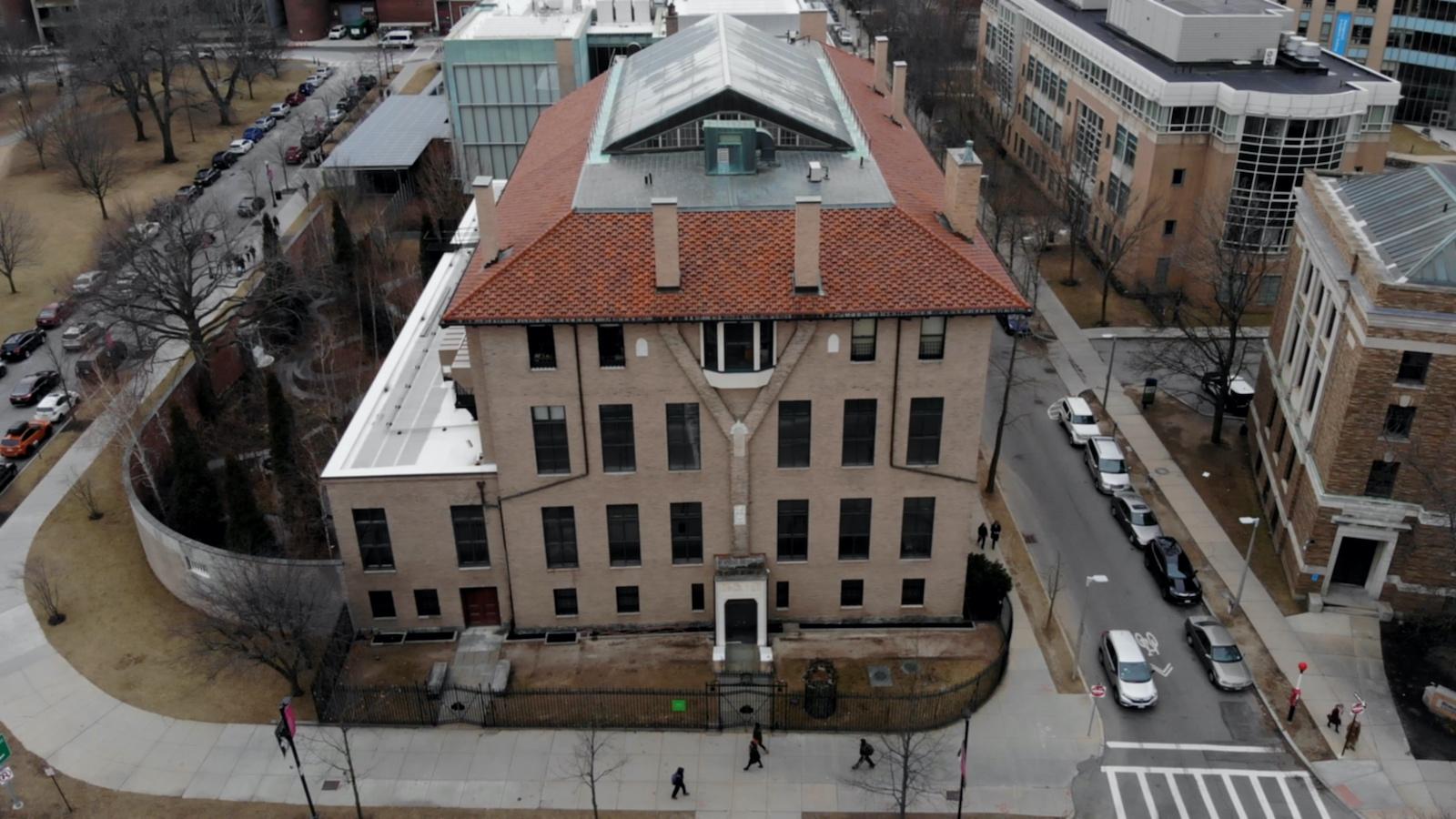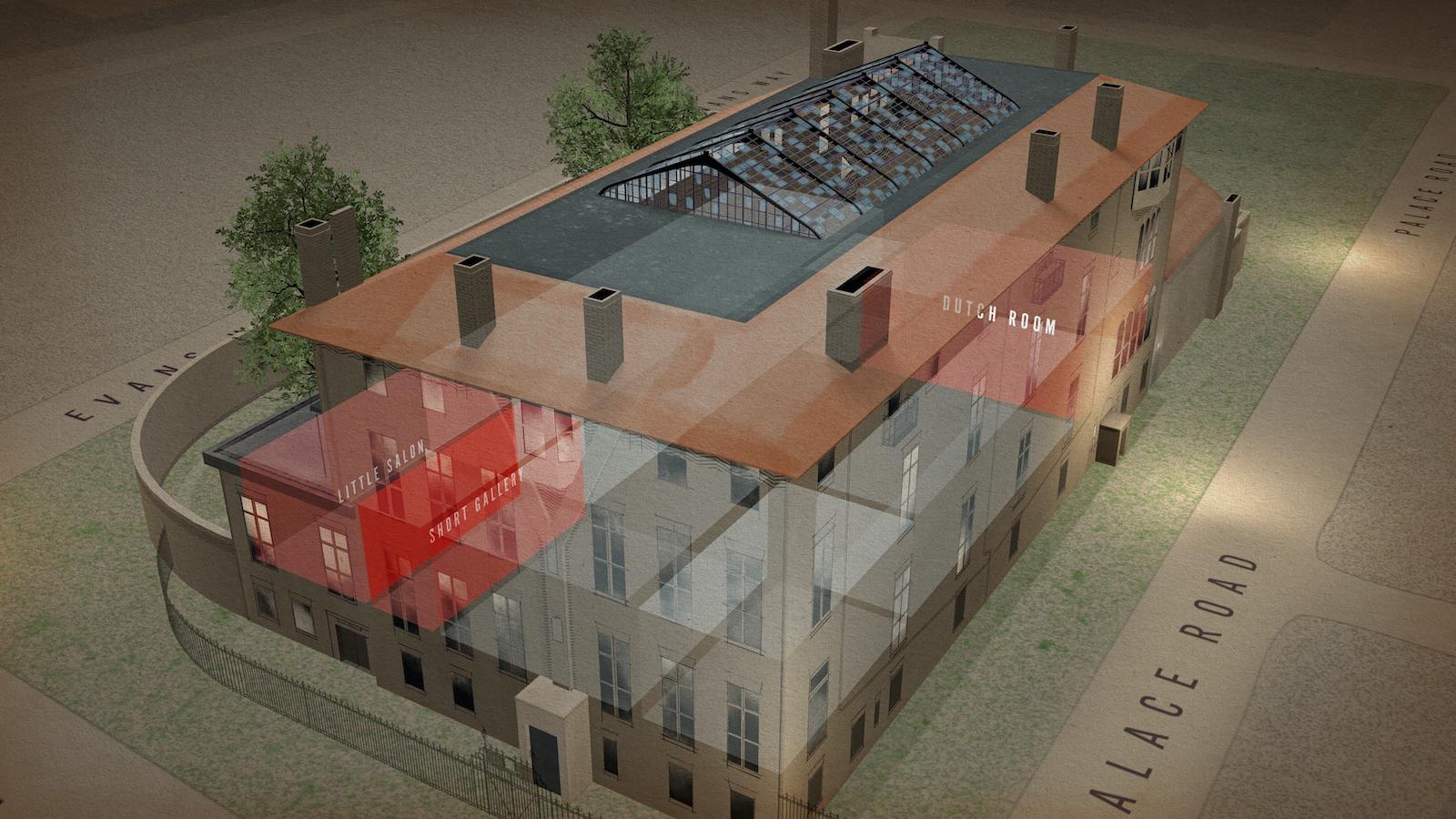But of course, the real purpose of this series is to assemble and share information regarding the robbery in hopes of finally recovering the artworks—a feat currently worth ten million dollars. That and to create another high-performing Netflix documentary.

Still from This is a Robbery: The World's Biggest Art Heist. Snapshot of the crime scene in the Dutch Room at the Isabella Stewart Gardner Museum.
On April 7, Netflix globally released This Is a Robbery: The World’s Biggest Art Heist. The four-part series delves into the unsolved robbery of Boston’s Isabella Stewart Gardner Museum and the mysteries that continue to loom large over the case more than thirty years later. The biggest remaining mystery is the current location of the artworks. According to the documentary, these works—which include pieces by Rembrandt, Degas, and Vermeer—are worth half a billion dollars.
Directed by Colin Barnicle and from the producers of The Irishman, the series is jam-packed with fascinating details anyone could spend hours on—from the empowering eccentricity of Isabella Gardner to the unsettling entitlement of Myles Connor, an art thief who wouldn’t seem out of place in another Netflix smash-hit, Tiger King.

Still from This is a Robbery: The World's Biggest Art Heist of Myles Conner, a preliminary suspect in the Gardner case and known art thief.
While a majority of the details surrounding this heist are just plain odd, many are disturbingly violent. The worst are related to Boston’s Italian mafia. The majority of suspects and people of interest in this case have died over the last three decades. Though some died of reportedly natural causes, one was decapitated, and several others were shot. One was shot in the mouth for talking to the police.
It seems clear that violent and dangerous criminals were involved in the execution and planning of this robbery. And yet, another dichotomous head-scratcher emerges: the guards held hostage in the basement during the robbery report being regularly checked on by one of the thieves, asked if they were comfortable and if they needed water.
The heist occurred in Boston over St. Patrick’s Day weekend, the home of the United State’s largest St. Pat’s celebrations. The museum was also under new leadership at the time. Director Emerita Anne Hawley had just started at the Gardner six months prior and had her hands full with burst sewage pipes and introducing climate control to the building.

This is a Robbery: The World's Biggest Art Heist. Pictured: Anne Hawley (Director Emerita, Isabella Stewart Gardner Museum).
Although rather rundown by the nineties, the Gardner museum is and always has been a work of art. Built by its namesake in 1903, the structure is meant to resemble a fifteenth-century Venetian palace, sports a massive atrium, and has themed rooms that feel more like living spaces in a mansion than museum corridors. Fascinatingly, Gardner stipulated in her will that neither the collection nor the gallery arrangement should ever be changed else the entire museum should be auctioned in Europe. A theft was not accounted for in this document.

Key Art for This Is a Robbery: The World's Biggest Art Heist.































